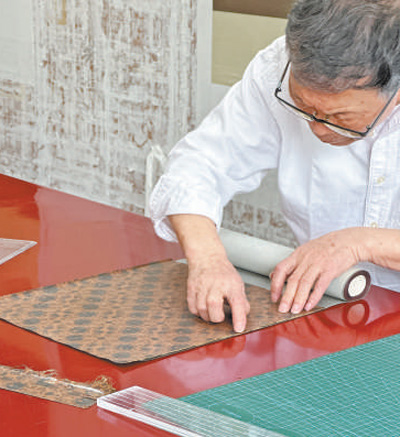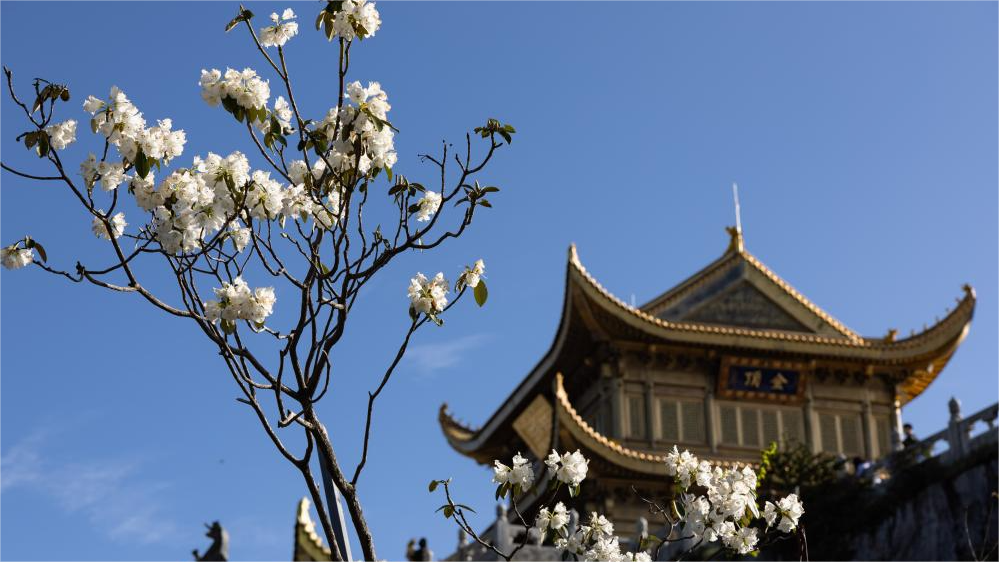Restorer dedicates 60 years to saving China's ancient art treasures
Zhang Xiaozhai, a specially appointed professor at the China Academy of Art and a senior cultural relic restorer at the Zhejiang Art Museum in east China's Zhejiang Province, has developed techniques for restoring ancient Chinese paintings and calligraphy damaged by mildew, moths, and other factors.
With over 60 years of experience, he has successfully restored masterpieces from the Tang Dynasty (618-907) to the Qing Dynasty (1644-1911).
Zhang began working in Hangzhou at the age of 18 and became an apprentice to Chen Yanbin, a renowned painting restoration expert. After three years of intensive practice, he furthered his studies at the Shanghai Museum and the Palace Museum, continuously improving his restoration skills.

Zhang Xiaozhai demonstrates the restoration process of an ancient painting. (Photo/Ning Qinbo)
Today, the 81-year-old is an outstanding representative of the second-generation restorers of cultural relics and ancient Chinese painting and calligraphy works in Zhejiang Province.
According to Zhang, restoring an ancient painting or calligraphy involves several complicated steps, including cleaning, separating, repairing, and restoring. These steps require extreme care and patience.
An ancient painting or calligraphy work consists of layers of paper or other materials. These include the painting layer itself, Huaxin, and the paper layer attached to Huaxin, called Tuoxin paper.
"The most crucial step is to separate Huaxin from Tuoxin paper," Zhang said. "Improper handling will cause huge damage to the painting or calligraphy work."
"Repairing is the most demanding step of the entire process," Zhang added. "It requires selecting a material that matches the Huaxin layer in texture, pattern, luster, and color to maintain the original appearance."
Zhang's most unforgettable experience was assisting his master, Chen, in restoring the Lotus Sutra, a Buddhist classic written on paper from the Northern Song Dynasty (960-1127).
When Zhang and his master saw the seven scrolls of the Lotus Sutra sent by the Zhejiang Art Museum in 1963, they were shocked to find that the scrolls were seriously damaged and could not be separated using standard methods. Zhang recalled that even his master, who had over 40 years of restoration experience at the time, had never encountered such a situation.
After repeated research, Zhang and his master decided to soften the scrolls from the outside.
"My master found a clue — there was an old method of steaming paintings, but it had been lost over time. Specific details such as how to steam, how long to steam, and how to control humidity and temperature were no longer recorded," Zhang said.
They conducted numerous experiments and eventually succeeded in restoring the scrolls.
In 1966, Zhang developed a new technique to restore a piece of silk embroidery from the Northern Song Dynasty to its original appearance. The restored artifact showcased China's superb and exquisite textile and embroidery skills, providing important material for researching ancient Chinese silk weaving, dyeing, and other crafts.
Zhang believes that painting and calligraphy restorers should preserve the original appearance of ancient works to the greatest extent possible without making undue changes. They should master superb skills and promote excellent professional ethics to extend the lifespan of ancient paintings and calligraphy works.
Since 2012, Zhang has taught in the Department of Cultural Relic Conservation and Restoration at the China Academy of Art as a specially appointed professor.
Over the years, he has trained five apprentices and taught around 200 students. Some of his students have become restorers of ancient paintings and calligraphy at museums and other cultural heritage institutions, while others have established cultural relic restoration studios.
"As students, we need to carry forward not only Zhang's techniques for restoring ancient paintings and calligraphy but also his unwavering dedication and passion for cultural relics, as well as his humility and sincerity," said Ning Qinbo, a student of Zhang.
Photos
Related Stories
- Archaeological findings of 2,200-year-ago tomb released
- China's Bronze Age relics enchant American audience
- Feature: China's Bronze Age relics enchant American audience
- Antiquities repatriation fosters deeper China-U.S. cultural exchanges
- China receives 38 cultural relics returned from U.S.
- U.S. returns 38 pieces of cultural relics to China, signaling enhanced cultural exchanges
- Pic story of cultural relics guardian at Faxing Temple in N China
Copyright © 2024 People's Daily Online. All Rights Reserved.









